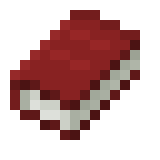Reviewer: John B.Developed By: Bandai Namco Entertainment/MARVELOUS!Published By: Bandai Namco EntertainmentCategory: Action, RPG
Release Date: 07.12.19Price (At Time of Review): $59.99
Buy God Eater 3 from the Nintendo Switch eShop here.
Buy God Eater 3 from Amazon here.
God Must Be Big; We’re Three Games In and They Haven’t Finished Eating
I’m a big fan of the Japanese gaming scene, but due to a limited budget and the finite nature of time there are many series I’ve been unable to experience. For example, God Eater, which released in 2010 for the PSP, another Japanese gaming device for which I have a particular fondness (but not as much as the Switch, naturally), and has had six major games released, even though half of them are remakes. God Eater 3 is the latest addition to the series, and the first original release in some time; the last non-remake entry in the series was God Eater 2, way back in 2013. It came out for PS4 and PC in February, but the Switch port took a while, sadly – but not too sadly, because it’s here now. If this is what I’ve been missing, I deeply regret not getting in on the series’ ground floor. It looks like I have some game hunting to do, but first: the review.

Apocalypses Are Terrible, But Post-Apocalypses Are Cool As Hell
The year is 2071, and humanity has been pushed to the brink of extinction after the appearance of the Aragami – monsters made of clusters of Oracle Cells. Oracle Cells are ravenous organisms that can (and will!) devour anything in their path. To make matters worse, the Aragami have filled the atmosphere with a substance called Ash which makes the planet’s surface completely uninhabitable to humans. An organization known as Fenrir developed a method of infusing certain compatible humans with Oracle Cells, creating beings with enhanced strength, speed, and endurance known as God Eaters. God Eaters wield weapons called God Arcs made from deceased Aragami. After the appearance of the Ash, a new breed of God Eater, called AGE (Adaptive God Eater) was developed. AGEs have the ability to survive in the Ash, even if only for limited amounts of time. Gleipnir, the military branch of Fenrir, is making moves to retake their headquarters, which had been taken by the Aragami years before.
But Gleipnir and their goals are far away from the small port of Pennywort (a port is the catch-all term given to the underground shelters in which humanity has taken shelter since the emergence of the Aragami). The Pennywort government treats its God Eaters as prisoners; between missions, their hands are bound and they are tossed in a cell until they are commanded to put their lives on the line again. It’s not uncommon for God Eaters to be treated poorly; despite their necessity to humanity’s survival, many people view them as monsters because of the cells they share with the hated Aragami. Many God Eaters come from the ranks of the poor and disenfranchised to begin with, so there are few willing to stand up for their rights. You are one of Pennywort’s Adaptive God Eaters; you risk your life with your brothers and sisters with little hope of any kind. If the Aragami don’t get you on a mission, the Ash will wear you down eventually.
You don’t have much, but you have your friends. Hugo, a young man with whom you underwent the procedure to become an AGE, is your closest friend, but you’ve also got the excitable firebrand Zeke and his techy brother Keith, who isn’t an AGE but still underwent a God Eater procedure, as well as three young orphans indentured to the port who have undergone the procedure, but aren’t ready for combat yet. The group is desperate to find something to hope for or believe in, but when the game opens the world has yet to oblige them. However, when an Ash storm capable of wiping out the entire port begins brewing near Pennywort, the three AGEs are presented with their chance to break free from their bonds and take hold of their own destiny.

No Spoilers, But The Rest of the Story is Pretty Cool
Like the sub-heading right there says, I don’t want to go too far into spoiler territory here, but I think it’s worth taking a minute to praise the game’s storytelling economy. For as big as the scale of the game’s narrative (and monsters!) eventually gets, the game itself takes place in pretty confined areas. Both the mission stages and inter-mission base sequences are pretty small, but the game both makes them feel bigger than they are with its action and mission design and utilizes the cramped spaces to expertly establish the desperate situation of the protagonist and his associates.
Early on, one of the children in the AGE prison is sick, and it’s pretty apparent that the cell guard is poisoning him to cut some money from his budget and reduce his own paperwork. The other AGEs can’t do anything to help except hope that they can find a medikit in the field and try to smuggle it back in. The storyline plays out in a few short cutscenes and some brief NPC dialogue, but it brilliantly realizes the wretched reality Pennywort’s AGEs are facing. God Eater 3 consistently constructs its narrative with similar shrewdness; it manages to wring maximum effect out of a minimum of words. It’s an impressive feat of video game writing.

Devouring the Action
God Eater 3 may do some pretty impressive stuff with its narrative, but the meat of the game still resides with its action. Controls are responsive, smooth, and consistent, which is about all you can ask for from a game. The action is fast-paced and exciting, even if missions are generally brief affairs. Most regular story missions have a forty minute timer on them, simulating your characters’ Ash resistance limits. I think I got about halfway through, and I have yet to encounter a mission that took more than ten minutes, although that number has been going up as larger and more powerful Aragami appear. Some side missions have smaller timers, but again, I’ve yet to not finish a mission because of a time limit.
Combat consists mostly of actions you could probably already guess just by knowing that this is an action game. You can run, jump, melee attack, switch weapons, fire your gun, guard, and dash for all your basic movement and fighting abilities. Attacks can be chained together for combos, which is also pretty standard. The unique combat mechanic in God Eater 3 starts with the Devour ability. Devouring enemies fills up a Burst gauge, and when that fills you enter Burst Mode. During a Burst certain types of combos or attacks are strengthened depending on which Burst Arts you have equipped. Burst Arts have a number of different attributes, ranging from increasing damage to stealing health from enemies.

Abilities Aplenty
You can also reap the benefits of Acceleration Triggers, which will temporarily provide you with a boost after you meet its requirements during battle. They have similar effects as some Burst Arts, such as increasing damage or stealing health, but they are always active and won’t apply only to certain attacks like Burst Arts. During battle you’ll also see a circular gauge over your allies’ heads; that’s the Engage meter. When it’s full, you can activate your Engage ability, which, again, has effects similar to Burst Arts and Acceleration triggers, except this time the ally you engage also gets those bonuses, and you get the bonuses from their Engage abilities as well. I didn’t see a lot of benefit to holding off on using Engage to see if there was a more strategic place to use it; generally I always activated it as soon as it was available, since that meant I could fill up that ally’s bar more quickly and maybe make use of the ability again.

Hit Hard, Hit Fast
The experience of combat leaves little to be desired; the action is visceral and hard-hitting. The visual effects of attacking with a God Arc are impressive and truly add a sense of weight and power to every attack you make, befitting the strength of a God Eater. The responsiveness of the controls is helpful as well; if you can tell that an attack isn’t going to connect before an Aragami attacks, you can switch to a dash and dodge fairly easily, or jump in the air if a ground attack is coming. Reading Aragami attack patterns is crucial to your success, as well; luckily, it’s pretty simple to recognize what attacks are coming from an Aragami’s stance. Sometimes an enemy will launch two different attacks from the same stance, but, honestly, you should really just get out of an Aragami’s way whenever they start shaking anyway, so it’s not really a huge problem.

The Life of a God Eater is Hard…
GE3 has a different take on RPG mechanics than most. In a lot of RPGs, you gain experience points and level up to get stronger. That’s not really how things work here. Your character progression is determined entirely by your equipment, in particular your God Arc. God Arcs have three different components; a melee weapon, a gun, and a shield. Upgrading or buying a new God Arc is the only way to increase your attack, and your defense is only active when you’re guarding, but tinkering with your shield is the only way to get a higher defense rating, too. The main way to do any upgrading or purchasing of new equipment is by crafting gear at a terminal point in the between-mission areas.
The other way is by installing skills into your equipment, in the form of Abandoned God Arc parts that you scavenge as mission rewards or buy from the store. Every God Arc has one or more slots than can be filled by Abandoned parts, which can imbue the God Arc with a variety of different useful attributes. Some increase your health or stamina, some increase your ammo reservoir, and some increase your attack or Burst Art power. Some will allow your Burst Arts and Acceleration Triggers to grow faster, thus becoming more powerful on their own, regardless of equipment. And some will increase the drop rate of items or allow you to view your opponents’ status.

…But At Least There’s Not Much Grinding
Despite the engaging combat and interesting character progression system, I think the best thing GE3 does to the RPG formula is cut out a lot of the grind. I never had to grind for experience, and you get enough salvage throughout the regular course of the game to keep your weapons fully upgraded pretty much automatically if you only follow one weapon tree. There are eight weapon types to choose from, with plenty of different varieties of each weapon, so you can grind out a pretty cool, expansive arsenal if you want, but you can also just focus on upgrading the same weapon through the whole game and get rid of the grind altogether fairly easily. So, in that case, grinding is pretty much just for clothing, which is purely cosmetic, so you don’t need to do any more than you really want (and I do want; the jackets in this game are on point).
The briefness of the missions and small mission areas also cut out a lot of the hassle of grinding, which is also appreciated. That applies both to playing missions for the first time and returning to previous missions to look for materials. Since there’s not a lot of ground to cover, you can get to every item spawn point and defeat all the Aragami in the area pretty quickly, which allows you to harvest items faster and either get on to the next mission or go on the next round of grinding that much faster. I really appreciated how streamlined the game’s mechanics are set up in this regard; a game that’s set up to let you get to the good stuff without bogging you down in repetitive grinding is always well-crafted in my book.

Group Tactics
God Eater 3 also features a pretty cool multiplayer setup that lets you hunt Aragami with your friends as well as with a random group of folks from the internet. Setting up a party is pretty simple; you just select a multiplayer mission from the menu and you’re sent to a lobby to wait for other players. At the end of thirty seconds, any slots not taken by another player are filled with AI players so you always have a full party. It also means you’re not sitting in a lobby waiting for the party to fill itself out instead of playing the game. You can set a password for your game, too, so only your friends who have said password can get into your game if you don’t feel like partying up with randos. Like I said, it’s a pretty efficient way to set up multiplayer sessions, but there is one small problem; the thirty second party-building limit often results in having to play with more AI characters than other humans. While the AIs aren’t terrible, they’re definitely not as good as human God Eaters, in my experience.

Ashlands Fashion
While I have to admit I’ve seen sharper graphics on the Switch, there are two things to keep in mind about the visuals. One, they are still pretty dang impressive; I’m still blown away by the graphical quality on the system’s handheld screen. Two, the visual design of the game is spectacular from top to bottom. Every character you meet has an awesome design, from your fellow AGEs to the towering Ash Aragami. It all looks like it comes from the coolest anime you’ve ever seen; which brings us nicely to the intermittent anime cutscenes. The game’s opening cinematic and certain key story sequences are gorgeously animated, much like another of Namco-Bandai’s much-loved RPG series, the Tales games. At least an hour of my playtime for this game has to be from watching the intro every time I boot the game up.
The intro is accompanied by a rocking J-Pop song that perfectly foreshadows the quality of music you can expect from GE3. The soundtrack is made of a good mix of rock, electronic, and orchestral tunes that accentuate the atmosphere of every scene without overpowering the action. I especially liked the dramatic J-Pop song that played whenever you got into a boss fight; it made me feel like I was playing out the climactic battle of a badass anime series. The game is fully voice-acted in Japanese with full subtitles, which further emphasized the feeling that I was acting out a beloved anime series.

A Full Meal
It’s pretty tough for me to find fault with God Eater 3. From the first time the game booted up I was engrossed by the rich story and pulse-pounding action promised by the gorgeously-animated intro movie. Once I actually started the game, it delivered on all that promise and then some, with memorable characters, excellent use of its narrative structure, and fast, responsive action. The fact that the game offers a path through itself that frees players from the tedium of the grind process, if they choose, is icing on the cake. Throw in an easy drop-in/drop-out setup for the game’s multiplayer portions, and Namco-Bandai have an absolute winner on their hands.
Score: 10/10
Buy God Eater 3 from the Nintendo Switch eShop here.
Buy God Eater 3 from Amazon here.
Follow Bandai Namco Entertainment
*Review Code Provided by Fortyseven
Categories
Recent Posts
Tags
#Broforce #dev #DRIVE #FE #indie #indies #Kickstarter #kickstarter #Minit #nindies #Nindies #Nintendo #NintendoSwitch #Owlboy #RaceDieRun #Switch #SwitchCommunity #switchcorps #SwitchCorps #SwitchCorps #Switchiversary #SwitchLewd #SwitchLewds #Switchruary #Twitch #videogames #VitaIsland #YouTube




Leave a Reply